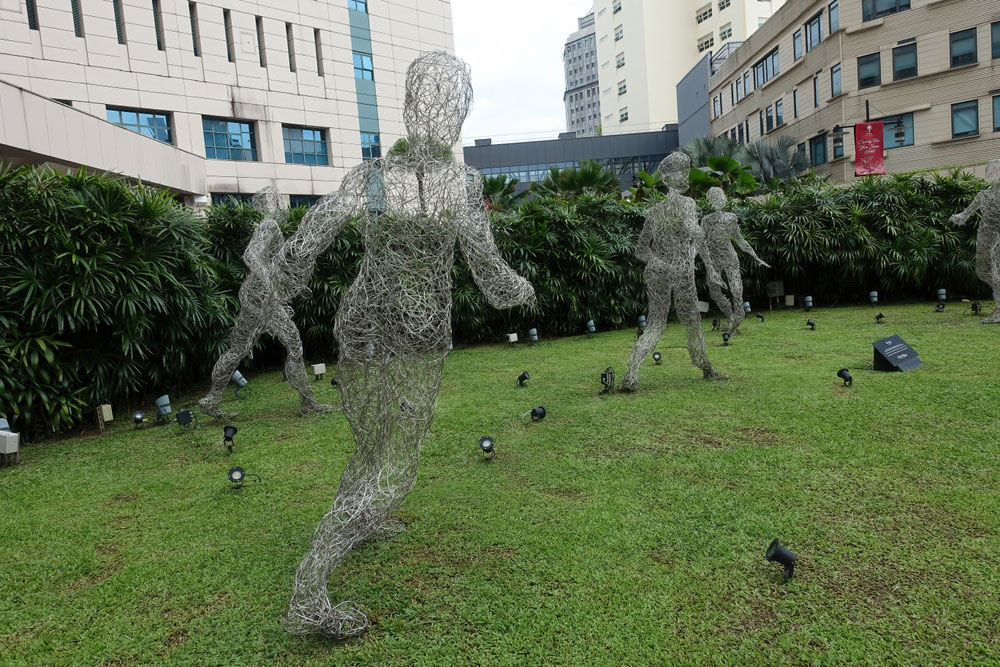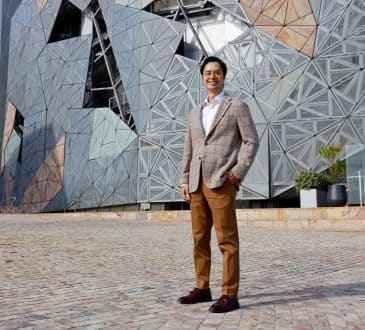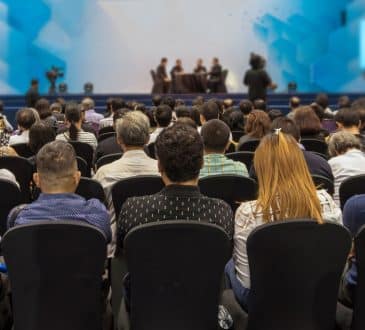Better Together

During my CEO Group workshops, I often ask the members to pair off and thumb-wrestle one another. I tell them that the CEO who gets the most pins in thirty seconds will win a fictional $100,000. After thirty seconds, I asked each pair who got the most pins. I’ll typically hear three, four, or five. Then someone will invariably exclaim, “I got 40 (or some other big number).” As you might imagine, I respond, “Wait a minute, how did you get 40?” The CEO explained that one of them offered to let the other win as many times as possible in the thirty-second timeframe, and they agreed to split the cash. The point? Collaboration beats competition every time.
Another example comes from an exercise I love to lead among employees at larger gatherings. I’ll ask, “How many sports fans do we have with us?” Among those enthusiastically raising their hands, I’ll select someone and ask, “Who is your favorite team?” Once they share their favorite team, I have them imagine that they are in the stadium during the championship game. I add that it’s evident that their team is about to win. I count down 3-2-1-0 and have the person behave as they would in their moment of victory – clap, yell, and cheer as loudly as they can. Regardless of how extroverted someone may be, they can’t help but feel a bit self-conscious. Upon completing this part of the exercise, we all give the participant a round of applause. Then I ask everyone to stand and think of their favorite team so they can join in the experience exercise together. After counting down 3-2-1-0, the collective cheers blow the roof off the place.
The lesson here? All too often, we don’t ask for help. Instead, we try to fill the room with sound all by ourselves. When we work together and learn from one another along the way, as we did in this exercise, we not only achieved an exponentially more dramatic result, but no one felt self-conscious. Everyone just had fun. Our workplaces have become one of the only places we can engage one another in these fun yet powerful ways.
Why the Workplace?
One reason can be gleaned by looking at the arc of trust as told by The Edelman Trust Barometer (ETB) over the years. The ETB studies public trust in institutions (Government, Business, Media, and NGOs – non-governmental organizations). Edelman has conducted the study in 28 countries since 2001. While the complete results are worth reviewing, the annual headlines over the years tell their own story. I selected a few here:
2003 – Earned Media More Credible than Advertising
2005 – Trust Shifts From “Authorities” to Peers
2006 – A “Person Like Me” Emerges as Credible Spokesperson
2009 – Trust in Business Plummets
2011 – Business Must Partner with Government to Regain Trust
2014 – Business to Lead the Debate for Change
2016 – Growing Inequality of Trust
2018 – The Battle for Truth
2019 – Trust at Work
2023 – Navigating a Polarized World
As I see it, a key storyline is that we’ve gone from “Who do we believe?” to “What do we believe?” We’ve also seen trust in business go from a low point in 2009 (in the wake of the 2008 financial crisis) to becoming the most trusted among the four institutions – including NGOs. Employees trust their co-workers and work environment and seek a reliable resource for what is true. Unfortunately, the world is only getting more divided.
What Can We Do?
The only way to navigate a polarized world is by doing it together. First, we must come together. Let’s take the spirit of being purposeful and collaborative in the workplace to being more productive and cooperative in all walks of life. It’s time we embraced the idea of liberty – the recognition that I can exercise my right to freedom so long as it doesn’t impact the rights of others to experience the same. Because employees trust one another and their workplaces, CEOs are uniquely positioned to lead as never before. Given that, Edelman’s advice for today’s CEOs and business leaders is clear:
As the most trusted institution,
- Business must continue to lead. As the most trusted institution, business holds the mantle of greater expectation and responsibility. Leverage your comparative advantage to inform debate and deliver solutions across climate, diversity and inclusion, and skill training.
- Collaborate with government. The best results come when business and government work together, not independently. Build consensus and collaborate on policies and standards to deliver results that push us toward a more just, secure, and thriving society.
- Restore economic optimism. A grim economic view is both a driver and outcome of polarization. Invest in fair compensation, training, and local communities to address the mass-class divide and the cycle of polarization.
- Advocate for truth. Business has an essential role to play in the information ecosystem. Be a source of reliable information, promote civil discourse, and hold false information sources accountable through corrective messaging, reinvestment, and other action.* *2023 Edelman Trust Barometer
The lessons embedded in the thumb wrestling and applause exercises apply. It starts with each of us. The sooner we understand that we are better together, the more likely the divisiveness taking place in today’s world will give way to collaboration and kindness. Starting today, let’s be more intentional about doing so.
Written by Leo Bottary.
Have you read?
Wealthiest Sports Owners in the World?
World’s Richest Actors And Their Net Worth.
World Richest Tennis Players And Their Net Worth.
Richest NFL (National Football League) Players.
Top CEOs in Singapore, 2023.
Ready to join the CEOWORLD magazine Executive Council– Find out if you are eligible to apply.
Bring the best of the CEOWORLD magazine's global journalism to audiences in the United States and around the world. - Add CEOWORLD magazine to your Google News feed.
Follow CEOWORLD magazine headlines on: Google News, LinkedIn, Twitter, and Facebook.
Copyright 2025 The CEOWORLD magazine. All rights reserved. This material (and any extract from it) must not be copied, redistributed or placed on any website, without CEOWORLD magazine' prior written consent. For media queries, please contact: info@ceoworld.biz











